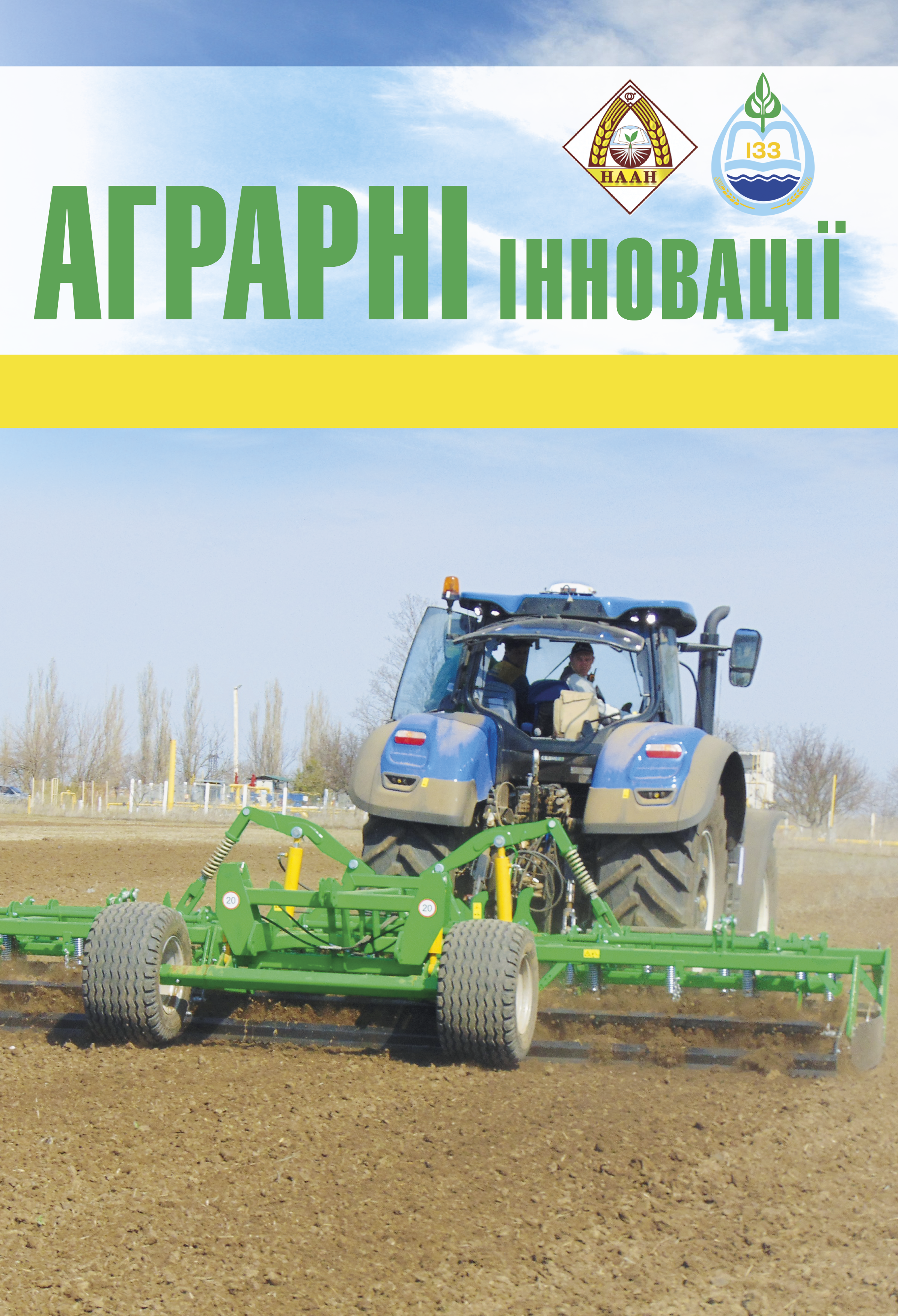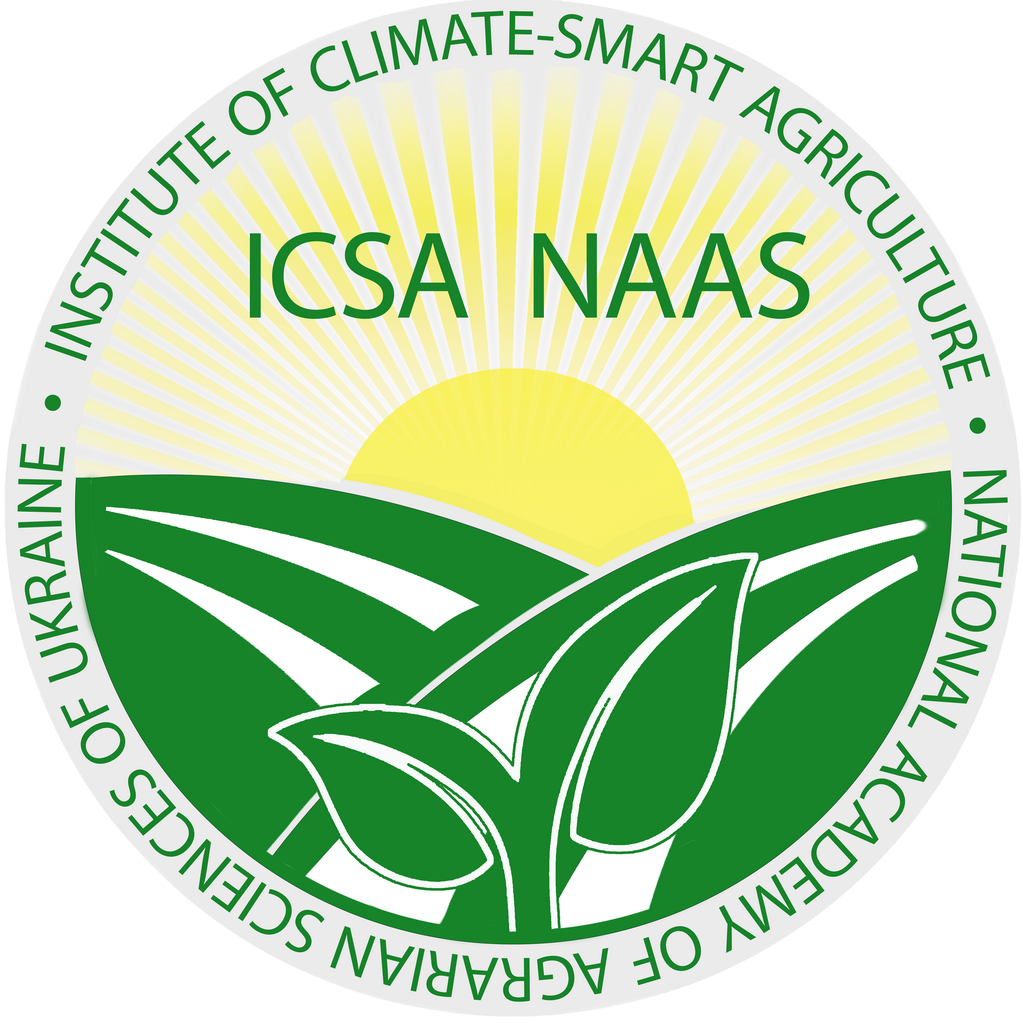The reaction of the nutrient medium in vitro culture on the growth of different sorghum plant species
Abstract
Aims. To study the effect of pH medium on biometric parameters of different sorghum species in vitro culture. Methods. Laboratory – growing sorghum plants in vitro, measuring, analyzing, statistical. Results. It was found that at pH 3.0, shoot formation was not observed in all studied variants. The highest shoot number indicators were observed at pH 5.5 and 6.0 in all studied variants. So, in the control variant, the number was 16 and 18 pcs. In grain sorghum and sorghum orysodium 12 and 16 pcs, and 14 and 16 pcs, the smallest number was determined in sorghum sudanese hybrid and broom sorghum – 8 and 9 pcs, and 5 and 9 pcs. Analyzing data during plant rooting, it was found that at pH 4.0, from 77 to 96 % of dead plants were obtained. In the control variant, this indicator was 97 and 80 %, in grain sorghum – 95 and 77 %, in sorghum orysodium – 94 and 83 %, in sorghum sudanese hybrid – 90 and 80 %, and in broom sorghum – 96 and 85 %. In the pH 3.0 variant, all plants died. It was found that at pH 4.5 and 5.0, the number of dead plants in the control was 50 and 22 %, the highest in broom sorghum – 63 and 42 %, and the lowest in sorghum orysodium – 47 and 28 %. The lowest plant death was observed in experiments with pH 5.5 and 6.0 – from 1 to 10 %. In the control of these variants, this indicator was 6 and 1 %, in sorghum sudanese hybrid and sorghum orysodium – 8 and 10 %, and at pH 6.0 there were no dead plants. 8 and 2 % were obtained in grain sorghum and 14 and 3 % – in broom sorghum. Conclusions. It was established that pH 3.0 has a negative effect on all biometric indicators and causes the death of most plants in all studied variants. It was established that at pH 6.5 there is no sharp decline in the length of shoots, the number of roots, the length in all types of sorghum and in the control. The highest indicators, regarding the formation of all studied growth processes, were obtained at pH 5.5 and 6.0 in all studied sorghum species.
References
2. Yang Q., Porter A. J., Zhang M., Harrington D. J., Black G. W., Sutcliffe I. C. The impact of pH and nutrient stress on the growth and survival of Streptococcus agalactiae. Antonie Van Leeuwenhoek. 2012. Vol. 102. Р. 277–287.
3. Kannan S. Correlative influence of pH reduction on recovery from iron chlorosis in sorghum varieties. J. Plant Nutr. 1980. Vol. 2. Р. 507–516.
4. Pant M., et al. Effect of pH and gelling agents in nutrient medium on in vitro shoot multiplication of Swertia chirata Buch. -Ham ex Wall: An endangered medicinal herb. Materials Today: Proceedings. 2023. Vol. 73. Р. 9–12.
5. Лавриненко Ю., Балашова Г., Котова О. Культивування рослин картоплі in vitro за мікроклонального розмноження. Вісник аграрної науки. 2016. Т. 94. № 11. С. 43–47.
6. Swain N. C., Surendra V. Effect of nutrient media, pH and temperature on in vitro growth of different Alternaria isolates. Journal of Plant Protection and Environment. 2009. Vol. 6. Р. 107–111.
7. Ткаченко О. А. Ліпідний склад M. bovis за тривалого пасажу швидкорослого штаму на щільному поживному середовищі з рН 6,5. Науковий вісник ЛНУВМБТ імені С. З. Ґжицького. 2009. Том 10 № 2(37), Ч. 1, Р. 245–251.
8. Дрегваль О. А., Черевач Н. В., Вінніков А. І. Підбір оптимальних режимів кислотності середовища та аерації при глибинному культивуванні Bacillus thuringiensis і Beauveria bassiana. Вісник Дніпропетр. ун-ту. 2010. Вип. Т. 18. С. 15–19.
9. Петріна Р. О., Маснюк Я. Т. Калусогенез у культурі in vitro арніки гірської. Вісник Нац. ун-ту «Львівська політехніка». 2008. № 609. С. 151–155.
10. Trchounian K. et al. Hydrogen production by Escherichia coli growing in different nutrient media with glycerol: effects of formate, pH, production kinetics and hydrogenases involved. international journal of hydrogen energy. 2017. Т. 42. № 38. С. 24026–24034.
11. Guo G., Xiao J. Byoung R. J. Iron source and medium pH affect nutrient uptake and pigment content in Petunia hybrida ‘Madness Red’cultured in vitro. International Journal of Molecular Sciences. 2022. Vol. 16. 2022. Article number 8943.
12. Голубенко А., Цап В. Клональне мікророзмноження рослин Acorus calamus L. in vitro. Вісник Київського національного університету імені Тараса Шевченка. Інтродукція та збереження рослинного різноманіття. 2016. № 1. С. 54–56.
13. Подгаєцький А., Мацкевич В., Філіпова, Л., Кравченко Н., Карпук, Л. Оптимізація технології культивування павловнії (Paulownia Siebold Zucc.) in vitro. Journal of Native and Alien Plant Studies. 2022. Vol. (18). Р. 191–208.
14. Подгаєцький, А. А., Мацкевич, В. В., Філіпова, Л. М., Кравченко, Н. В. Екзогенні детермінанти росту регенерантів павловнії in vitro. The Scientific Heritage. 2020. Vol. 53(2). Р. 5–15.
15. Біленька О. М. Івченко Т.В., Мозговська Г.В., Віценя Т.І., Баштан Н.О., Мірошниченко Т.М. Методичні підходи щодо селекції та сучасних технологій розмноження і вирощування батату (Ipomoea batatas L.) (методичні рекомендації). ІОБ НААН, 2018. 36 с.
16. Біотехнологія: методичні рекомендації / В. В. Андреєва, Т. П. Бортнік, Ю. Л. Рибак, М. О. Шепелюк. Луцьк, 2022. 47 с.
17. Присяжнюк О. І., Климович Н. М., Полуніна О. В. та ін. Методологія і організація наукових досліджень в сільському господарстві та харчових технологіях. Вінниця, ТОВ «Нітлан-ЛТД», 2021. 300 с.






